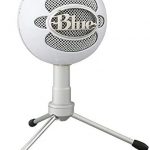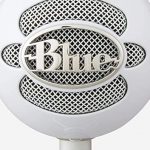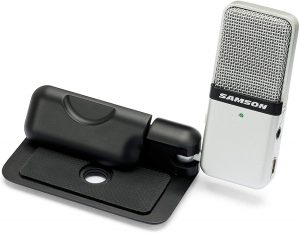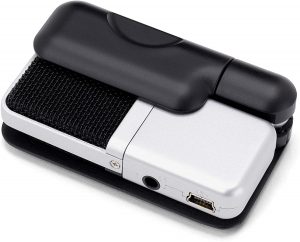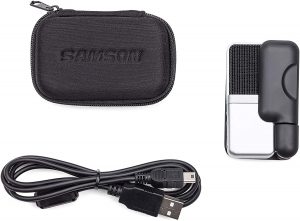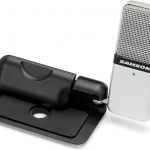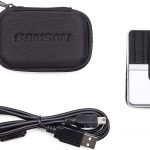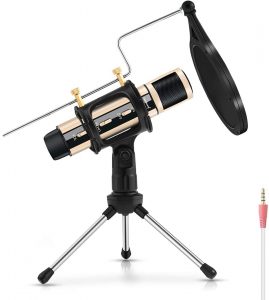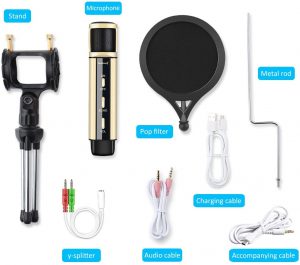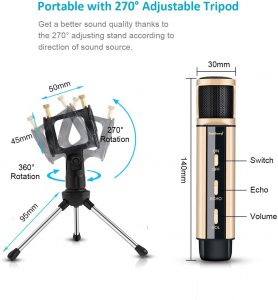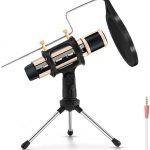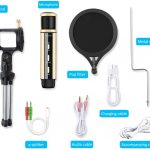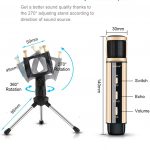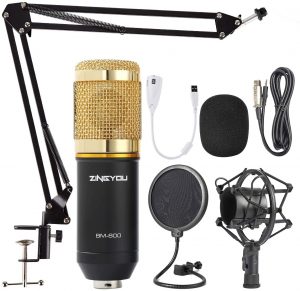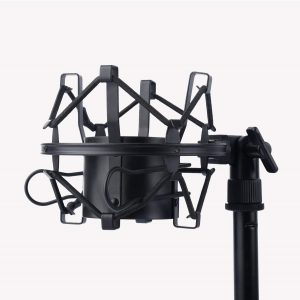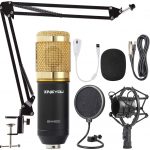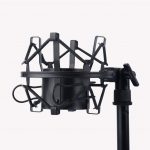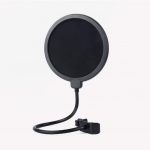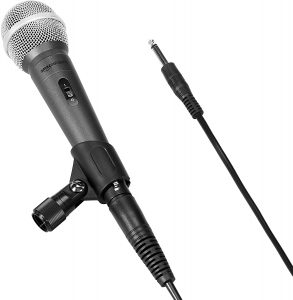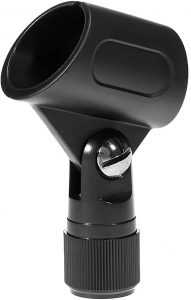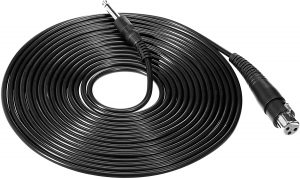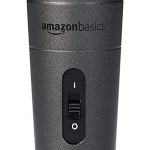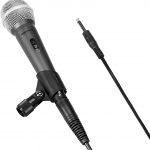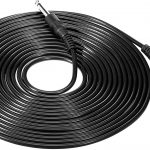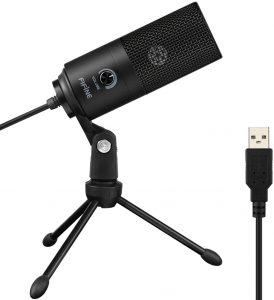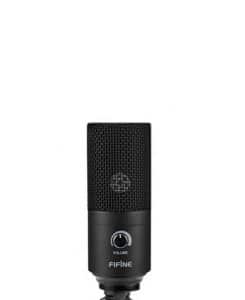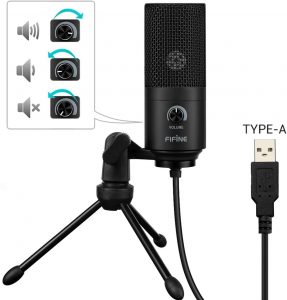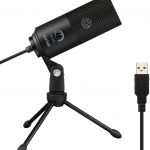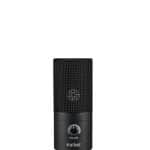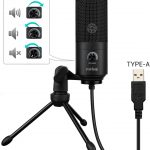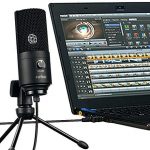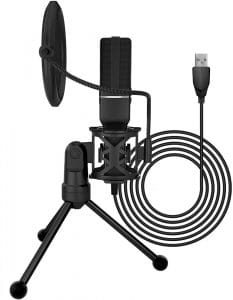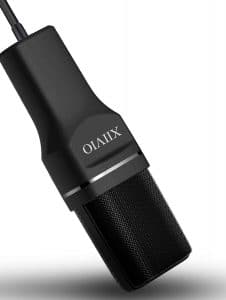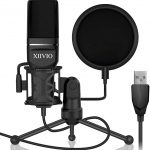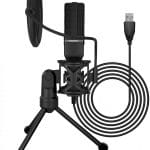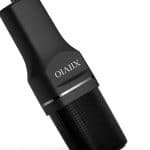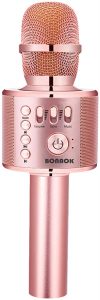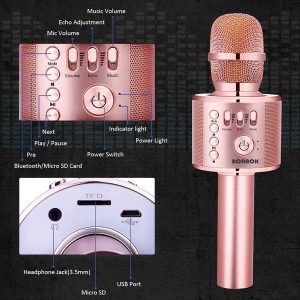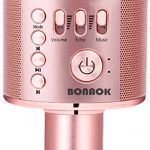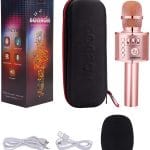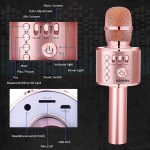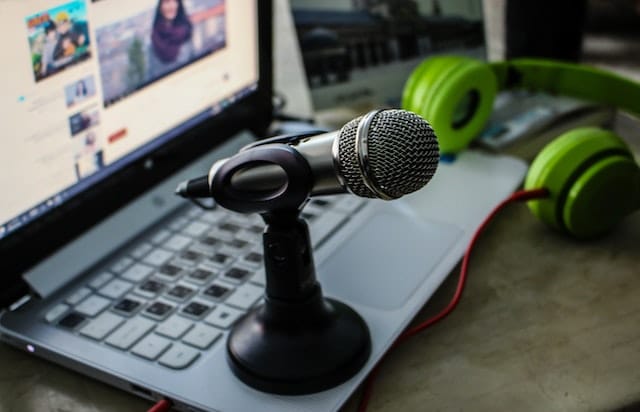What to expect from a cheap microphone?
Admittedly, cheap microphones generally cannot stand up to professional types. But they offer the needed features for beginners and some hobby use.
With cheap microphones, don’t expect a frequency range below 20 Hz and higher than 20,000 Hz. The lows, as expected are not recorded well as products in the higher range will. But, regardless, they are still ideal for hobby activities and karaoke, for example. However, there are equally great models with features that beat many so-called high-end microphones. For example, the 20Hz-20kHz frequency range of the ZINGYOU BM-800 and the Fifine K669B beat the range of other higher-priced models on the market. This makes them ideal for podcasting, voice recording, and more.
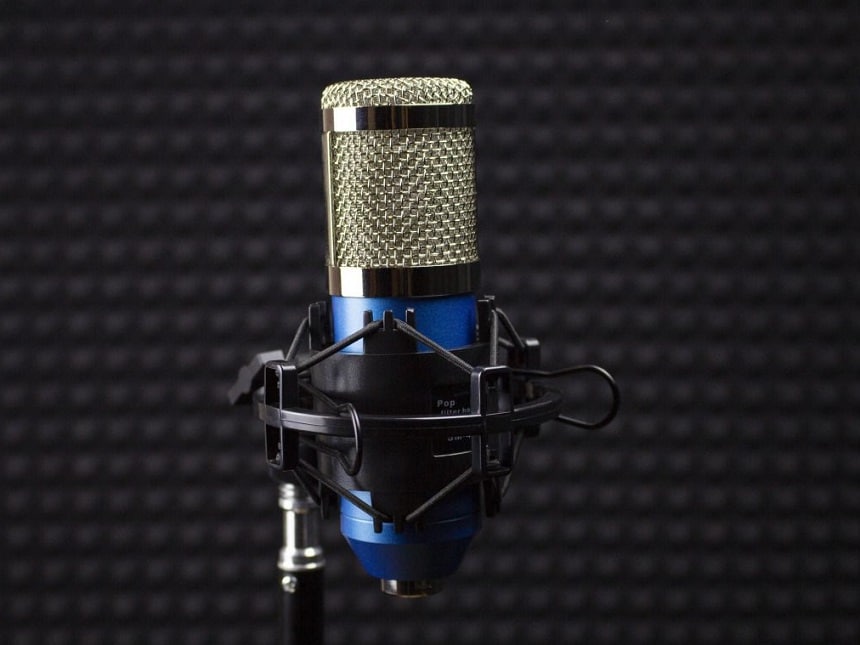
What budget mics can be used for
Microphones differ depending on the purpose. But the budget mics have their limitations. Presenters at radio stations use speaker microphones that are higher than this price range. Musicians and singers work with resilient dynamic equipment and additional sound amplifiers at live events. TV reporters use directional microphones for their reports to block out ambient noise. Clip-on microphones with radio communication are common in film and television. They are very small and can be attached to clothing.
However, budget microphones are no better than hobby activities and other endeavors that are not really professional.
Some areas of application of budget microphones at a glance are:
- For YouTube/Twitch livestreams and recording
- For PC connectivity/online education
- For gaming sessions with friends
- For karaoke
- For voiceovers
- For podcasting
- For rapping, etc.
Brands
Below are some of the best manufacturers of the best budget mics.
- ZealSound: ZealSound is a sound technology product manufacturing brand whose aim is to make headphones that have quality craftsmanship, extraordinary sound, with natural style. Most of their products are made of wood as this is the best for sound amplification. Some of their best budget microphones include the ZealSound Studio Recording Microphone.
- Samson Technologies: Samson Technologies is headquartered in the US and started making audio equipment in 1980. Today, it’s a leader in the industry and manages three brands, Samson Wireless, Samson Audio, and Hartke. They have more than 250 products in 140 countries. It’s not known for cheap microphones, but the Samson Go Mic is certainly one.
- Blue Microphones: Also an American company, Blue is an audio production brand currently owned by Logitech. They design and produce mics, headphones, recording equipment, and music tools for all professionals, musicians, and audio hobbyists. Some of its best cheap under $50 microphones include the Blue Snowball iCE Microphone.
Features to consider while buying the best microphone under 50 dollars
In this subsection, we will look at some things to consider before buying a microphone for under $50.
Capsule type
There is a device type that best suits every purpose. These are the best-known capsule types found in budget microphones and their areas of application:
The condenser microphones
Condenser microphones are usually used for recordings in the studio, indoors, or at home recording. They are among the most common types of microphones and their market share is almost 90 percent. The design enables precise recordings: the devices are sensitive and process voices and instruments true to detail. These microphones are often installed in a microphone spider or on a microphone stand. This microphone – which is not suitable as a handheld microphone – reacts to small movements with background noises.
There is a thin membrane inside the microphone behind a perforated metal plate. Opposite it is a counter electrode which, together with the membrane, forms the device’s capacitor. It can be powered by phantom power put under tension. When sound waves hit the membrane, it begins to vibrate. The distance between the counter electrode and the membrane changes. This leads to a change in capacitance in the capacitor. Electrical impulses arise and from there get into the mixer or the computer. Samson Go Mic and Blue Snowball iCE are good examples of under $50 condenser microphones.
Pros and cons of a condenser microphone
Pros:
Sound quality of the microphone: voluminous and warm
Low mass membrane
High sound quality thanks to natural recordings
More sensitive response to sound waves
Cons:
Not suitable as a handheld microphone
Greater sensitivity against background noise
Sensitive to fluctuations in temperature and humidity
The electret condenser microphone
Dynamic microphones
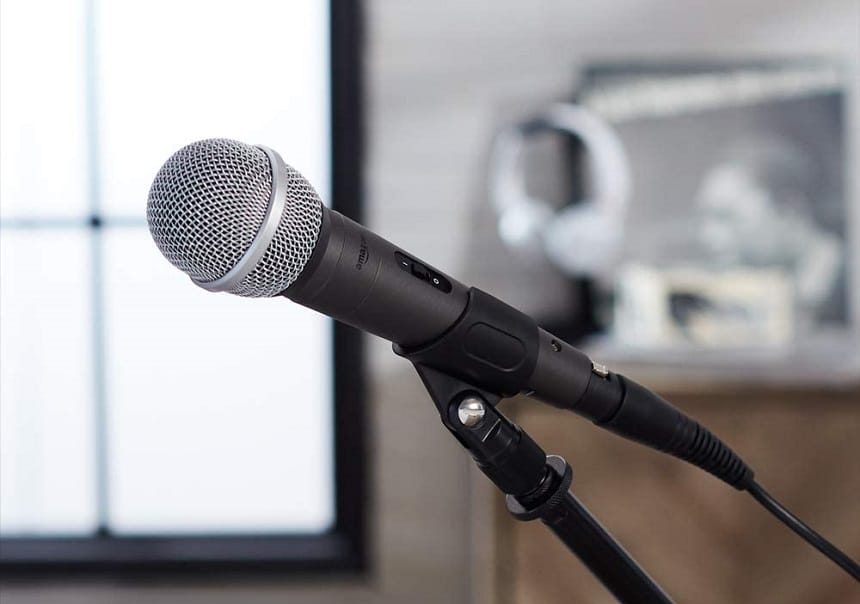
Dynamic microphones are useful for live performances on stage. They are considered to be resilient and are less sensitive to temperature fluctuations than condenser microphones. They overdrive less and are less sensitive to ambient noise or loud sounds, for example from drums. However, the recordings in the upper treble frequencies do not sound as fine as the good condenser microphones.
Most of the microphones of this type have a moving coil capsule that works similarly to a loudspeaker. The micro head is located on the back of the membrane copper coil. It lies in the field of a freely oscillating magnet. Sound waves hit the membrane and move the coil. The movement in the magnetic field creates a voltage and electrical signals are generated. This technology comes without additional phantom power out.
Pros and cons of dynamic microphones:
Pros:
No additional power supply required
Robust against external influences
Less prone to feedback
No regulation necessary
Cons:
Limited transmission range
Less detailed, especially in the uppermost treble frequencies
The USB microphone
USB microphones are standard amateur equipment and are often used for YouTube recordings and private podcast productions. They can be connected directly to the computer, laptop, or mobile device and are immediately ready for use. The recordings can be further processed directly in use. Both dynamic microphones and condenser microphones can have a USB port.
The microphone is compact and has a low price. It combines a microphone, amplifier, and audio interface in one.
Integrated systems and USB transmission cannot keep up with quality XLR systems and additional equipment. Listening in and setting the sound recording is less precise and not possible at all with some USB devices. These microphones can only be expanded to a limited extent with other systems.
Pros and cons of a USB microphone:
Pros:
Easy setup
Digital processing possible live
Low purchase price
Compatible with almost all operating systems
Cons:
Sound quality lower than with high-quality XLR systems
Setting and listening to the recording is often imprecise
Not compatible with effects devices and external preamps.
Connection type
A crucial question before buying a microphone is: How compatible is it with other devices? The microphone can be connected directly to a PC using a USB or jack plug. For higher quality devices with XLR connections such as the AmazonBasics Dynamic Vocal Microphone and the ZINGYOU BM-800, the user needs an additional mixer or audio interface. How good the sound is also depends on the connections. In addition to USB and XLR cables, there are jack, cinch, and radio link connections.
Guarantee
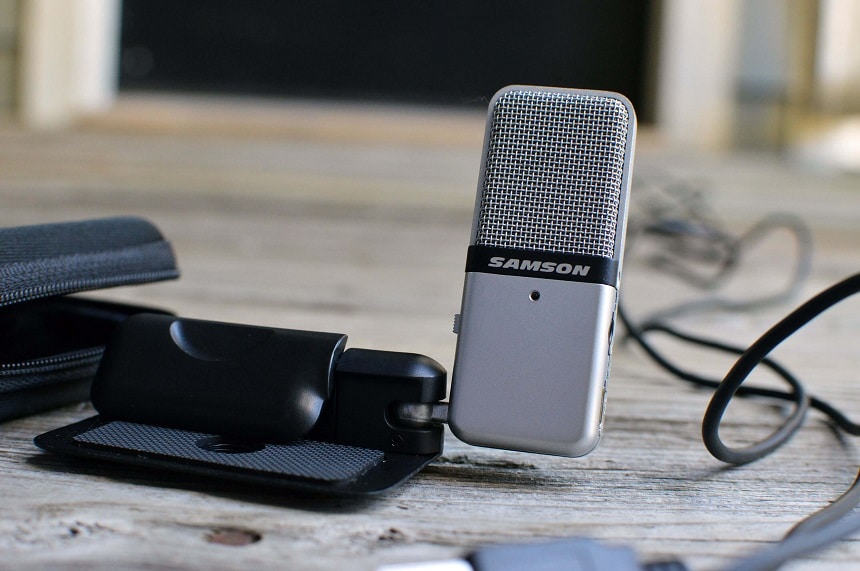
Yes, they are cheap microphones. But they are not designed to be used for a couple of months. A good budget-friendly mic must be reliable, durable, and have good longevity. It’s great if your chosen model has a 100% satisfaction guarantee in the form of a 30-day money-back policy. As for the warranty, 2 years is enough for you to have the value of your money’s worth.
Polar pattern
What is the polar pattern? We could say that it is basically how the microphones listen, detect, and take the audio signal. Knowing and understanding the polar pattern of your microphone will allow you to better adapt to each situation.
Omnidirectional: Omnidirectional microphones are those that capture sound with equal gain from any direction. They detect the signal in its entire circumference, capturing everything that surrounds them. The disadvantage of these microphones is that by covering the 360° range, they sometimes capture unwanted noise or instruments (in the case of an orchestra, for example).
Cardioid: This polar pattern is unidirectional. The front of the microphone points is where it will pick up the signal, as its sensitivity range is at the front. It will take the sound to the sides less. This makes it ideal for capturing point sources and rejecting others.
Supercardioid: These microphones are more directional than the cardioid. Although they have a similar polar pattern, the difference is that they have a smaller pick-up range towards the sides, but some signal may leak at the back.
Hypercardioid: This type of microphone features a front pick-up angle that is even tighter than that of a super-cardioid microphone. It allows for greater rejection of unwanted noise. In turn, they are more sensitive to sounds coming from the back.
Bidirectional: A bidirectional microphone has a polar pattern in the shape of a number eight. It has two pickup lobes, one in the front and one in the rear. It is designed to pick up audio in the same way from the front as it does from the rear, without picking up sounds from the side. They are usually used to record two opposing sources, they are common in guest interviews on TV, radio, and podcast.
Dimensions and weight
Large dimensions and high weight are factors that add nothing practical to the device. So, it’s always better to choose lightweight models that are not more than 300 grams. The dimensions depend on the type of mic, so choose a moderately sized product.
Materials used
The materials used determine the device’s durability, longevity, price, and weight. A mic made of aluminum alloy is usually very light. However, for more sturdiness, choose models made of steel or zinc like the AmazonBasics Dynamic Vocal Microphone. However, the downside is with high weight. Plastics, wood, copper wire are also common materials used in cheap mics.
Frequency range
Microphones sound very different. Good frequencies for voice recordings are the upper mids at around 20,000 Hertz. The mids are often raised in devices for vocal and voice recordings. The better this area can be heard, the easier it is to understand the speaker. The reason: Most consonants in Western languages are in this frequency. If you have a darker voice, you should use a microphone with a bright sound and vice versa.
Extra features
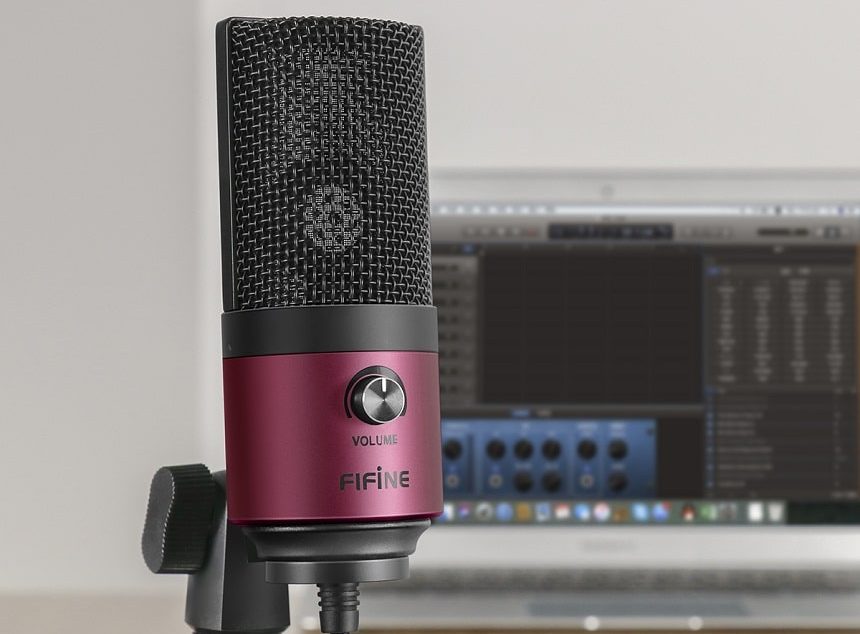
Modern USB microphones offer more technology than it initially appears. Many have an integrated sound card. This allows headphones to be connected directly to the USB microphone. The following accessories and services are also helpful for podcast production.
- Shock mount: The studio microphone must stand securely and be protected from vibrations. Such a holder decouples from the microphone disruptive noises that can arise from structure or footfall noise during a recording. This prevents loud rumbling in the audio signal. The device is clamped into the elastic suspension of the spider, in which it swings freely. For example, it can consist of a zigzag elastic band.
- Windscreen/Popscreen: Sounds like “b” or “p” can cause unpleasant, popping noises during a recording. The so-called wind or pop protection, a kind of filter in front of the device, keeps the air and wind noise out. In studio microphones, it is used to protect the device and its sensitive condenser membrane from the moisture that occurs when speaking and singing.
- Microphone stand: A bracket on a tripod ensures a secure stand. Microphone spiders too can be attached to it. An adapter that securely connects the bracket, the shock mount and the tripod may be required. The tripod is often used together with a boom with which the device can be positioned precisely. It is securely attached and the distance between the sound source and the microphone can be precisely maintained. As a rule of thumb, there is a hand’s breadth of space between the device and the speaker.
- Pop protection: Some sounds can be annoying during recording: A recorded “p”, “t” or “k” sounds like background noise. This is because, with these so-called explosive sounds, air builds up in the mouth and is expelled with one blow. This causes unpleasant, loud sounds, also known as pop noise. Accessories such as a foam cover or a pop screen help against it.









